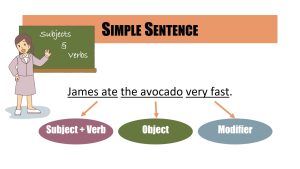39 Sentence Fragments
Greg Hartley
We don’t normally get grammatical in this textbook. However, sentence fragments require special treatment because they are a very common style feature for many beginning writers. Plus their excessive use can easily confuse readers.
But are fragments a style problem or a grammar problem? Both. Style and grammar are related features of language, but grammar refers to a language’s usage rules involving word order while style refers to professional guidelines for preferred language habits and practices. In writing instruction, style is often more important than grammar because style is context-sensitive. In other words, writers’ situations should influence their language choices.
An author may choose to write a fragments sentence as a stylistic decision, but when fragments are used accidentally or at the wrong time, they can cause miscommunication or, worse, cause the reader to draw unfavorable conclusions about the quality of the writing. So it’s best to know what a fragment is so that their usage can be purposeful instead of accidental.
Numerous national studies have found that fragments plague inexperienced writers. In a study of 3,000 papers written by college freshmen, Andrea and Karen Lunsford found that fragments appeared 1,217 times.[1] Fragments are common, but what makes them a big deal is not how hard they are to fix, but how hard they are to detect.
What is a Fragment?
Watch a video
Find the Fragment
The easiest way to spot a fragment is simply to read it out loud! Once you do that, your auditory fluency will intuitively kick in to tell you that something is missing. It can be hard to find fragments because we sometimes have just separated one part of the sentence from its completion by adding a period when we should have joined two phrases together. Consider this example:
- Leaving her place at the table for another user.
This sentence is a fragment because we don’t know who left. The sentence is missing a subject. But wait! In the original paper, here is what the student actually wrote.
- The player left the game room. Leaving her place at the table for another user.
Do you see what happened? The complete thought is actually there. The student just inserted a period instead of a comma, separating the two phrases and forcing the second one to become a fragment. Reading the second sentence out loud reveals the problem, and fixing it is very easy:
- The player left the game room, leaving her place at the table for another user.
We just change the period to a comma!
Want more practice? Download the handout.
- Lunsford, Andrea A., and Karen J. Lunsford. " 'Mistakes are a fact of life': A national comparative study." College Composition and Communication (2008): 784. ↵
Most people learn a language by speaking it first. This means that they know the language best by hearing it rather than writing it.


